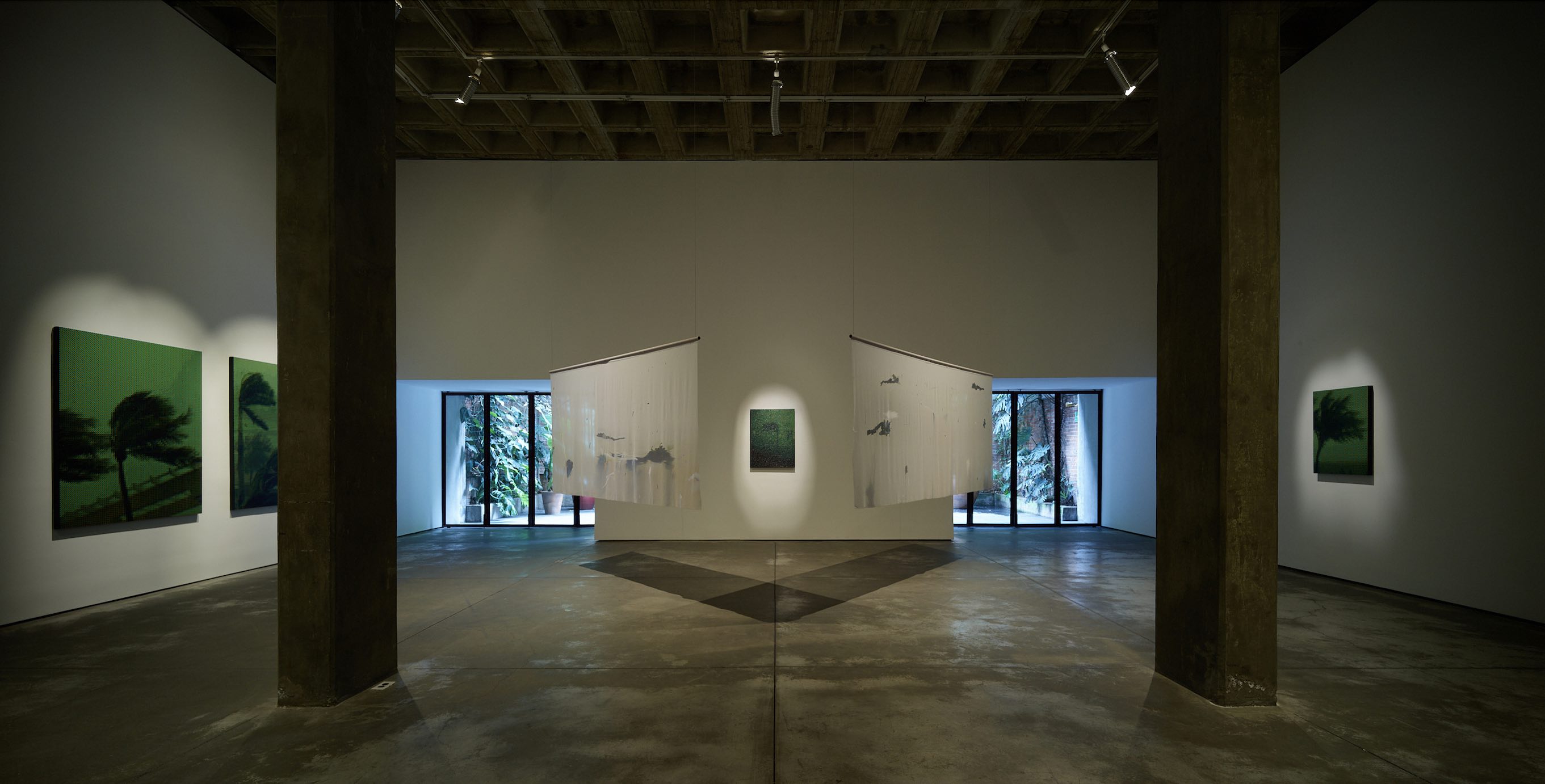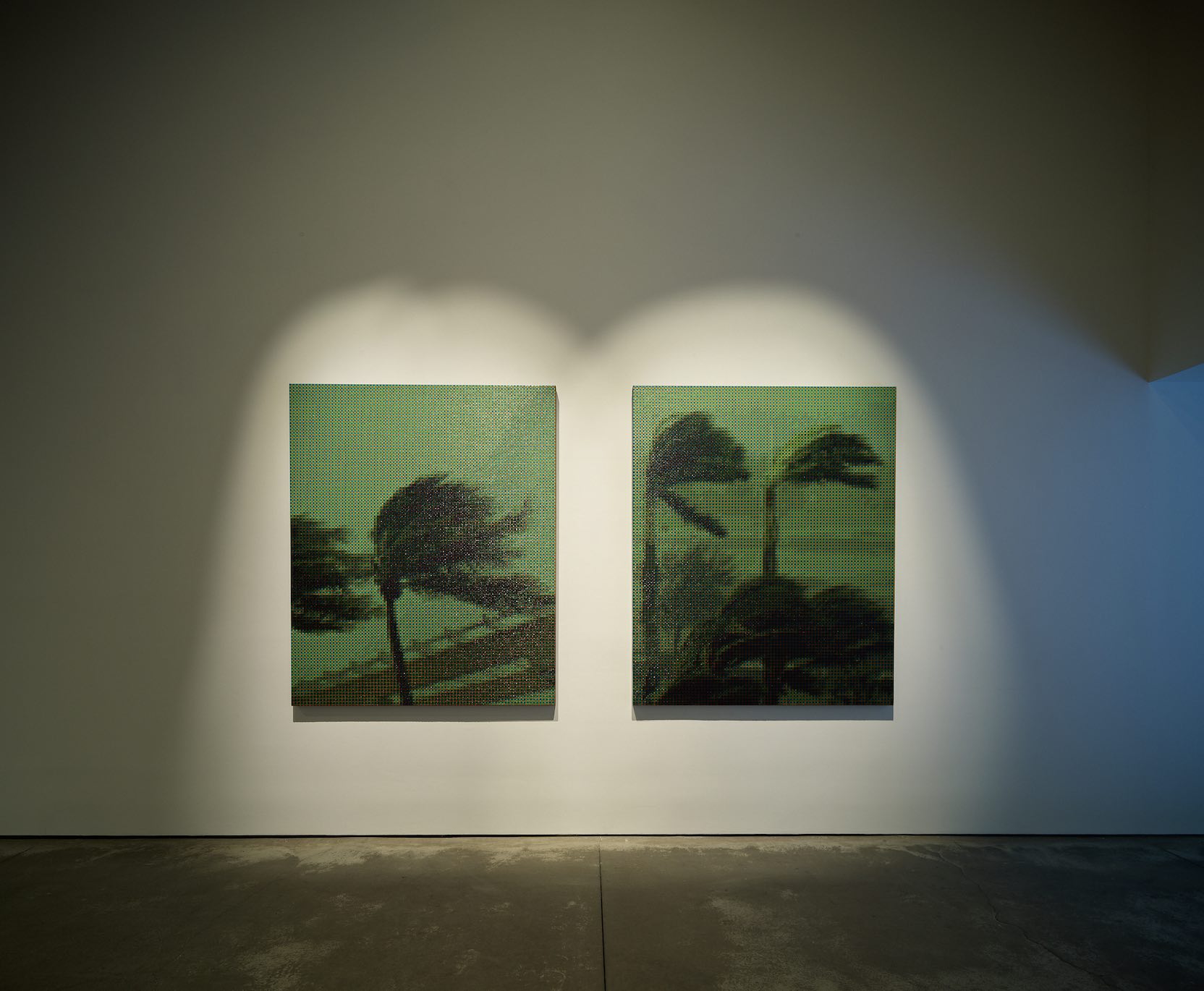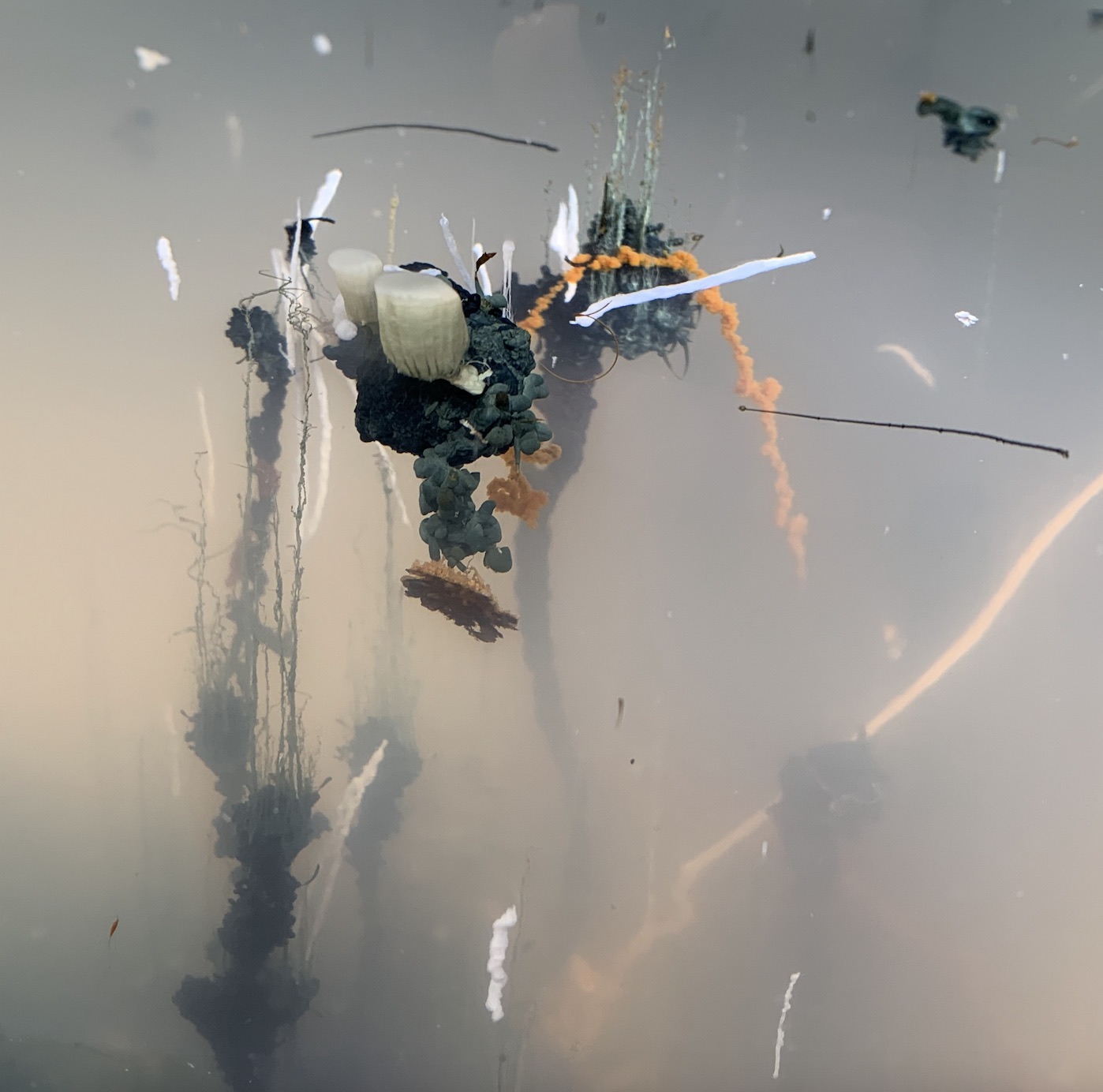
Review
Troika at OMR: To See a World Through a Grain of Salt
by Isabel de la Vega
Reading time
4 min
Troika is an English collective made up of Eva Rucki, Conny Freyer, and Sebastien Noel, artists interested in subjective and objective readings of reality, through the various relationships that we form thanks to technology. Their research revolves around the ways in which the digital world informs and integrates physical space, as well as the ways in which technological advances influence our relationships with the world and with each other. Examples would include cell phones, computers, TVs, smart watches, and devices that form parts of our day-to-day lives, insofar as they function as extensions of our bodies.
To See a World Through a Grain of Salt, which opened on September 8 at OMR, presents a cosmogony in which salt is the protagonist in human evolution, configuring itself as a conscious entity with characteristics completely opposed to organic ones. In this alternative history, disconnected from human agency, salt lacks life but boasts reason: a tool bestowed upon the human race that is made manifest thanks to geometry, mathematical thinking, and logic. All of these are disseminated in society and evolve over time.

In this narrative, salt is understood as an alchemical principle in that it seeks the transformation of the many minerals comprising the story’s main character, completely distancing it from conceptions of modern chemistry. Standing out among the pieces, and appealing to materials composed of minerals, the Evolutionary Composite series (2021) is made from silicon plates and double-faced flint.
Likewise, we see presented the pictorial series Irma Watched Over by Machines (2019), which renders visible the surveillance society in which we live, and in which we are observed 24/7 by cameras controlled by AI. Through this series, the artists demonstrate what video surveillance systems record on their smallest scale: RGB colors. The works are constituted via a tiny grid that serves as pixels.

For its part, Solid State Fiction (2021) consists of a series of prints on polyester georgette. The soft, vaporous fabric is stamped with images of futures under the rule of salt, in which this compound reigns above humanity. We can see the chemical reactions between metal salts and sodium silicate, configured as structures that are crystalline, complex, and striking. These are shown via kinds of organic and translucent shapes that invoke microscopic observation: they appear to be suspended in a liquid medium. The sensation of movement is reaffirmed thanks to their hanging from the vaporous fabrics on the ceiling.

By not making use of the tradicional materials and media standardized by the history of art, and by presenting a new reality, Troika confirms the fact that one of the functions of art is to account for the historical context in which one lives. Irma Watched Over by Machines (2019) accounts for this by using surveillance cameras as means of conceptualization: society is subject to daily scrutiny. At the same time, this approach challenges the ways in which we consume information, thus problematizing our understanding of reality.
It should be noted that this exhibition is part of a larger-scale project called Untertage, which is now three years old, and that To See a World Through a Grain of Salt functions as the prelude to that investigation.
The show will be open to the public until December 18 and is the third exhibition that the English collective has presented at OMR, the gallery representing it in Mexico.
Translated to English by Byron Davies.
Cover picture: Troika, To See a World Through a Grain of Salt. Photo by Fernando Marroquín. Courtesy of Troika and OMR, Mexico City.
Published on September 25 2021